The Ten Stages of the Mahayana Bodhisattva Path
The Two Preliminary Stages
Part 1
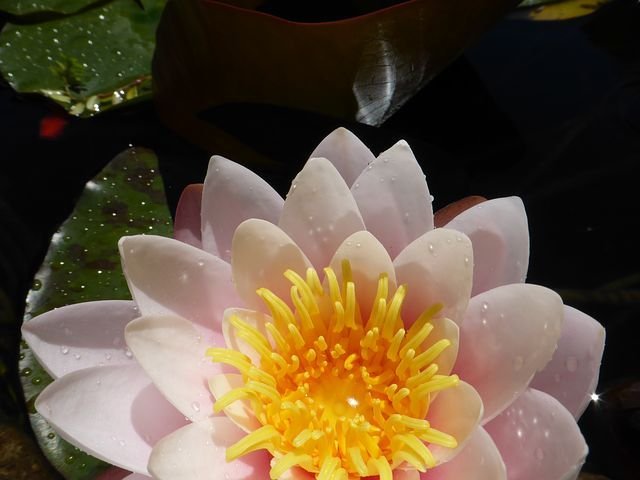
Stages of the Mahayana Bodhisattva Path are similar to the Theravada idea of the Noble Eight-fold Path, although not the same in the order of the stages, as well as the aim of the various stages that comprise the total trajectory that the Bodhisattva has to traverse. The idea of the Bodhisattva path is linked to the idea of bodhicitta, the aspiration of becoming enlightened, and this aim is for the benefit of all living beings—when compared to the Arahant idea is distinguished by the fact, that the Bodhisattva holds off on attaining final non-returning Nirvana until all sentient beings are brought along the journey of the Bodhisattva path towards enlightenment.
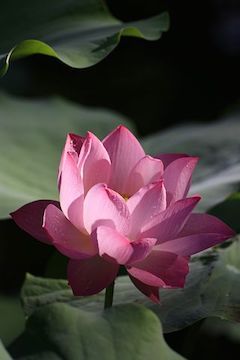
Various Mahayana texts discuss the stages of the path in varying detail and order. For this article, I’ve mainly followed the stages of the Path as explained in the Dasa Bhumika Sutra. Dasa bhumika in Sanskrit means ten stages. Prior to these ten stages, and similar to how the Theravada Eight-fold Path had the gotrabhu (becoming of the lineage), some texts define two preliminary stages that are important to be explained.
In this article, I’ll be discussing these two preliminary stages prior to the 10 stages of the Mahayana Bodhisattva Path.
The two preliminary stages
The difficult challenge for an adept in Mahayana is the completion of the pre-conditions required to pass from the state of an ordinary common person of the world to that of an initiate, a person who has the prerequisites and ability to eventually attain the highest good. In the Mahayana, one is required to develop Bodhicitta before being allowed to begin the practices of 10 stages.

The two preliminary stages can be found very in the Perfection of Wisdom (prajnaparamita) sutras and other Mahayana texts. They mention that it is required to perform meritorious acts, to serve previous Buddhas, and that one is to have many spiritual guides. Another text, the Sutralankara points out the importance of developing aspiration (adhimukti) through many lives, to accumulate merit, to complete following the Bodhisattva rules of discipline, to acquire wisdom by learning the Mahayana sutras, and benefit from the teachings of the Buddha.
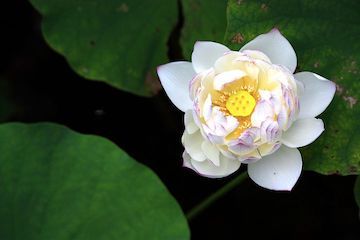
The preliminary stage of the future Bodhisattva consists of the practices of aspiration to become a Bodhisattva. One is a future Bodhisattva because of not having developed Bodhicitta. One aspires to become a Buddha by following the Mahayana teachings. After hearing the Mahayana teachings, one has initial thoughts about becoming a Buddha, but unless this is cultivated in more detail and when it is permanently in one’s mind, one is not yet possessing Bodhicitta.
The Mahayana text that has two preliminary stages is called the Bodhisattvabhumi. The stages are called Gotravihara and Adhimukticarya-vihara. These two define the required qualities.
The first pre-stage of Gotravihara is explained as a person who belongs to the noble class and has the qualities, high aims, and good dharmas of a Bodhisattva. These are clearly visible in his actions. The person performs wholesome actions without requiring persuasion, possesses the seeds of Buddha-dharmas and is incapable of committing unwholesome actions. This pre-stage is considered the essential starting point on the Mahayana path.
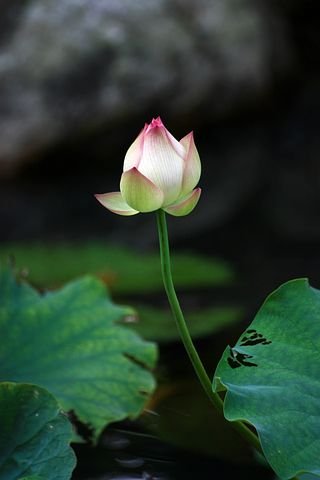
The second pre-stage of Adhimukticarya-vihara is the name given to the first attempts of a Bodhisattva to develop noble aspiration. The bodhisattva practices the teachings to a certain extent, but is not yet able to permanently retain the teachings. More explanations are given about what this pre-stage includes:
- Puts in effort for the good of all beings
- Has confidence in the truth of the Buddha’s teachings
- Has limited knowledge derived through hearing and reflection
- Follows the bodhisattva-path with some difficulty but has perseverance
- Still seeks his own happiness at times, although after reflection seeks the happiness of others as well
- Often notices one’s own shortcomings but does not have the sufficient ability to correct them
- Enjoys the Bodhisattva-dharmas teachings
The idea of the preparatory states is that it is a preparatory and testing phase to see who possesses the good qualities to become part of the lineage of the Buddhas.
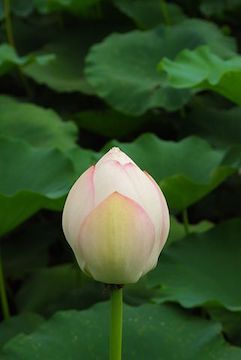
The Dasa Bhumika Sutra also provides some detail of the pre-bodhisattva stages, which are different from the account of the previously mentioned Bodhisattvabhumi. Some of additional explanations are:
The pre-Bodhisattva develop aspiration after accumulating enough merit, following the Mahayana practices, venerating many Buddhas, possessing wholesome and great intention and aspiration, and having great compassion for all sentient beings.
Saving all sentient beings from suffering.
It is by the development of Bodhicitta that a person rids oneself of the worldly ordinary state of being and becomes an noble person. Bodhicitta is vital as an aspiration to become a Buddha and to acquire the necessary qualities and powers of a Buddha.
The Bodhicaryavatara sutra text clarifies two types of bodhicitta: Bodhipranidhicitta and Bodhiprasthana-citta.
The first is an aspiration to become a Buddha for saving sentient beings from suffering without attending to the higher aspiration of attainments of virtue and wisdom.
The second refers to the determination to strictly follow the Bodhisattva disciplines and to strive for the acquisition of merit.
In the next article, I’ll be giving a brief overview of the 10 stages of the Mahayana Bodhisattva Path.

I will flag comment spam at 1% strength. If you keep on spamming my post, I will flag you at 100%. I don't care if you have limited English abilities, write a couple of sentences about this article, no copy-paste, please. I will flag: one sentence comments, links to your blog and begging for up-votes and follows. Also, I will flag comments that have nothing to do with my blog's article. I will also check your comment section to see if you have been comment spamming on other blogs.


 A link to My Blog
A link to My Blog
Greetings @reddust. Nice quiet night here in Nevada. Enjoyed reading your post. Frankly, just wanted to let you know I'm still around and appreciate what you post. Many blessings.
@mistermercury, thank you for stopping by, I would invite you over to dinner if we lived closer, I am not kidding. It is true that artist are selfish, I don't get out of my studio often enough and visit with my friends. Thank you again for your kind friendship...
It's really great to know that the concept of life, where we take many life's to complete and to achieve the aspirations. And yes, and through this knowledge we can understand the concept of rebirth, possibly rebirth happens to attain the incomplete aspirations. Thanks for sharing and wishing you an great day. Stay blessed. 🙂
For many people accepting that this energy bundle we call self does not stop when the body dies is difficult to accept, especially when we find out that Buddhism does not accept the personality goes on, there is no self in karma. It is easier to understand rebirth and karma as cause and effect the law of nature, each action we take is like a snowball rolling down a hill gathering mass and momentum...this is how my first teacher explained rebirth to me...Sunim's (Korean Buddhist Monk) english was limited but the snowball analogy worked for me, the hardest part was understanding there is no self to be found in that snowball...
Also we can understand how karma works by watching our daily actions and emotions, anger and hatred birth more anger and hatred, burn again and again until we stop being angry and hateful....
The same is true for (wise) compassion and kindness...I think I would rather be a snowball of loving kindness and compassion in this life and the next...hehehe
Oh, great to know your thoughts and more deep insights. Thank you. 🙂
Noble aspirations and wholesome actions are important. Perhaps if more folks followed these principles, the world would indeed be a better place. Perhaps we could be free from deception and self - centeredness. Thanks @reddust.
@enjoywithtroy, truly the virtues can be used by anyone as a vehicle in this world...they make a sturder vehicle compared to anger and hatred which are brittle and break easily, plus the virtues protect the mind/heart. The body may not be bullet proof but the virtues regarding how they protect our mind/heart. This was one of the most important teachings I found in Buddhism and were not taught in my Christian culture...I think our society even the churches have forgotten about wisdom coupled with loving kindness and compassion...there is a lot of fools compassion and kindness out in the world right now..hehehe
there is almost similarity between the science of tasauf with the explanation you convey, I am very impressed, ..
in Islam man is ordered to help each other, not hate each other, forgive each other, all these achievements can only be achieved when someone has reached the stage of disciples, while the new man trying to reach this level is called saalikun.
the Sufis always emphasize forgiveness, compassion, mutual help without expecting any reward, all these accomplishments by varying stages, you can search for this trait on the "ubudiah" and "sincere" explanations,
may we always be given Hidayah
I will look up the data you gave me @steemitnatural, thank you for sharing your knowledge of Sufism...I think at the core of each major religion, wise compassion, wisdom, selflessness are the stable base a person can build their house. Christianity has the same core practices...
I am so glad you are @reddust willing to share your knowledge, I am also a comparative material when teaching my students
this stage is very interesting,
in the science of tasauf there are known two kinds
1.hablum minallah
2.hablum minannation
hopefully useful, your explanation is extraordinary
I will look up the data, thank you @steemitcountry, the Bodhisattva path is taken when a person has developed wise compassion and wants to help others let go of their old conditioning which roots them in endless rebirths whether it is this life time of cycling through self caused suffering or if you believe in karma, endless lifetimes of self caused suffering from birth to death...the Bodhisattva makes a vow to become a teaching Buddha, to teach people how to stop the cycle of rebirth into a womb or into their own self caused suffering.
Well its a great deep knowledge you share nice to know such things
I had so much fun in the beginning of my practice over 20 years ago studying these ideas @techzegama, it was like I found treasure <3
in Islam there is also the term karma, the use of karma in Islam is a reward for the bad deeds of a person, but karma in Islam does not have to happen, where god could have forgiven a sinner so that karma does not happen, karma is the rightful god, it can be canceled,
whether in Buddhist teachings like this also?
There is karma in Christianity as well...The only way to remove karma is to stop the behavior that has planted the seeds, just like seeds of an apple tree will grow sweet fruit the seeds of negativity will grow bitter fruit...In Buddhism there are no Gods that have the power to change a persons conditioning. In fact all Gods in Buddhism are subject to the same law of nature, they to can create negative karma and are subject to rebirth into the lower realms.
means karma in Islam is almost the same as karma in Christianity, thanks for the information
Mahayana is one of buddhist majority mainstream also in indonesia especially in central java, thank you very much @reddust for your sharing to us valuable information, success always for you, greeting friendship and brotherhood from me @abialfatih in aceh indonesia
I am a Mahayana/Vajrayana practioner, however I have also had the good karma to meet and study with one of the best lay-person Theravada meditation masters from Burma, SN Goenka, so I love all of the vehicles that still exist today. There are 18 schools of Buddhism that are NOW extinct, only Theravada was able to continue their lineage.
Indonesia has a rich history practicing Buddhism, I would love to visit the ancient temple systems...I will be there one day when I am finished helping my family. Thank you @abialfatih
Dont forget tell me if you visit my country indonesia mrs @reddust, thank you very much
I wish I could say somethings in contribution but I must say every thing I read I just learnt. This is an enlightenment of the week for me . I’m just gonna say , keep steeming and touching lives. This is amazing insight you gave me.
I am sorry I don't have links to text online @olumideolowoyeye, but all the info from this article came from old books and the Bhumi levels change depending on the school. So I picked my favorite book from a guy named Dutt...he is writing is awful but his scholarship and research is amazing. Whoever was his editor needs to be fired! English isn't his first language and it shows in his sentence structure and organization of his book...he totally missed the header and title for the six Bhumi...lolol
https://archive.org/details/EarlyMonasticBuddhismVol.I
Oh it’s okay , I’m glad I could learn from you and that’s the point , that’s the value you’re adding unto me. More grease to your elbow my friend
greatly explained stages reddust May God bless you ..
Thank you @hassanbid and many blessings to you and your family <3
Reading it I feel like flowers bloom inside my soul and I also feel refreshed.
A little longer and I will breathe with rainbows!))
hahaha, I want to say something totally inappropriate for this post...may your day be full of rainbows...look up rainbow body in Vajrayana...I will be writing about this later on this summer.
I have never heard of the Light Bodhisattva before, this is a new insight for me ..
By the way it's a very pretty flower @reddust, if I can know what the name of the flower is?
@adson, the flower is the lotus, throughout the East the lotus represents the soul or as in Buddhism the Buddha Nature in each person that can rise above the mud and water of their birth...